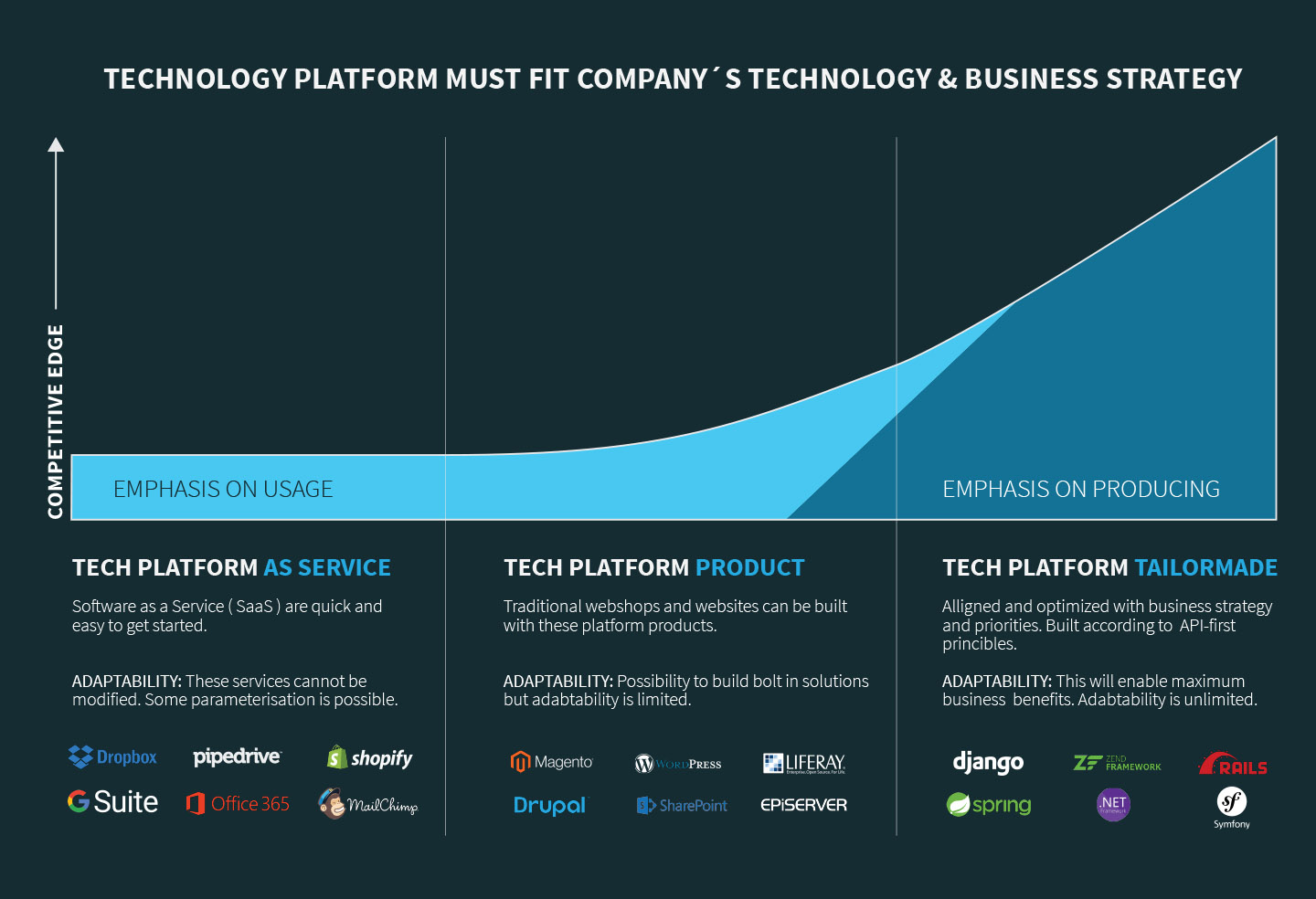
Technology strategy: How to transform from a Tech Slagger to a Tech Forerunner?
27 Aug 2018 • Strategy & Business Design
You will lose business without a solid technology strategy
Majority of CEOs and leadership teams view technology as critical to their company’s long-term survival, but very rarely companies have effectively balanced innovation risk profiles, capital constraints and organizational talent gaps to sustain their commitment to technological innovation.
Some companies are simply more attuned to embracing radical change to stay ahead than others who’s tech savviness and risk tolerance is low. Investments in company’s own integrated technology seem to hold the promise to shift power to the companies which can extract information and generate insights to successfully manage and drive business. Companies seem to be divided on one side or the other of disruption. I have categorised these companies as the “Tech Forerunners” and “Tech Slaggers”.
In the transformation phase companies must aggressively pursue an innovation strategy that aligns to their market position. The path forward requires identifying the right external partnerships, incorporating digital disruption into the core business and increasing comfort with risk taking.
Not every organization is able to harness the power of technology for themselves and their consumers. The resulting “paralysis gap” is creating an ecosystem of Tech Forerunners and Tech Slaggers. To avoid the “paralysis gap”, to start a journey of aligning technology with business priorities, companies will need to:
1.Integrate technology and business priorities
The leadership team will need to integrate technology and business priorities to develop a fit tech strategy for the company.

The tech strategy must fit in the overall strategy, vision and the growth stage of the company. Companies need to understand when to use a set tech platform and when to invest on integrated core technology solution to gain maximum adaptability and competitive edge. A sound strategy will unleash innovative technologies and new business opportunities.
Companies need to invest in having less systems and better insights. Companies need to invest more and more wisely in technology to get radical transparency in their data and to gain competitive edge to stay in business. This can bend the cost curve once mature and fully implemented.
While a variety of investment models can help accelerate the development of a robust technology strategy, ultimately, the right strategic decisions require research, analysis and a leadership team completely committed to digital transformation as a structural change.
2. Create a culture and get new skill sets to enable the strategy
Business-driven technology demands new skill sets and capabilities for most companies. Professionals such as chief digitalisation officers, data scientists, analytic strategists, user experience designers will become increasingly valuable while the roles of traditional IT and program managers will change.
Companies also need to keep educating their personnel to ensure they have the talent and knowledge necessary to deliver distinctive expertise across a set of different projects.
The most valuable part of the transformation process is in creating a culture of risk taking and getting things done in a agile manner. If you can’t build a culture and put digital in the DNA of a the company, you’ll never be successful. Being digital is not about technology its about the culture.
This is a huge structural change for most companies and the leadership team must ensure that´s pushed through middle management as not just as message, but as a structural change program.
Being a digital is not about technology, its about the culture.
3. Make the best out of the new insights to innovate and increase efficiency. Make testing and learning part of your everyday.
To complement the new technology, talent and culture strategy, companies should enable a ”build, measure and learn” attitude to make the best out of the new insights enabled by the new technology.
Getting testing and learning part of your everyday is easier than you think. If you have an idea or hypothesis to prove, just make a pilot for it. If possible, involve your customers to the pilot. Use Service Design methods in collaboration to gain the best results.
Focus on your customers, innovate and destroy all the rules that are stupid. Pilots can be used to increase efficiency and to create new innovative and unbeatable services for your customers. Services that your customers actually desire and need.
Focus on your customers, innovate and destroy all the rules that are stupid.
When should you start your transformation?
The future will be won by using better data – and that future is now. We all recognize the phenomenon of technology disruption—digital solutions are sweeping across industries and shifting massive economies. With disruption cutting so deeply and broadly, sitting on the sidelines is not a viable option.
Change takes courage, discipline and determination, but it is the only way to successfully close the gap between the Tech Forerunners and Tech Slaggers.
[smallCTA text=”Start your transformation now” link=”https://www.sofokus.com/contact-us/” /]






